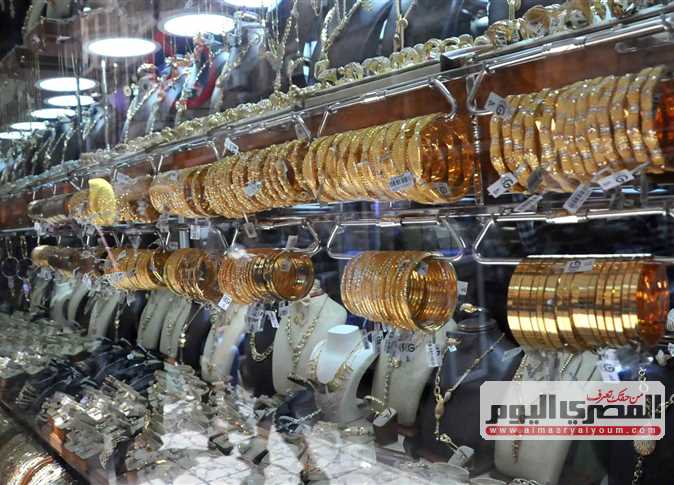The smell of bokhour, screams of the merchants, and stray cats are what characterizes Sagha Street. The Sagha area takes up about one third of Mu’izz Street from Al-Azhar to Bab al-Futuh, and it includes 100 or more gold merchants’ stores.
A typical dowry back in the twenties and thirties for middle class families was a pair of kholkhals (ankle bracelets), and Sagha was the place to find them. In the neighbouring area of Hayy el-Nahhasseen (the Welders’ District) newlyweds could get their pot and pans.
Gold merchants and shops are scattered on both sides of the street; some have huge windows and marble entrances and others are tiny with nothing in their windows but a sign saying 'we buy and exchange old and broken gold ornaments'. The area caters to all tastes; from sophisticated and pricey Italian gold to Egyptian gold and 'sheftishy' (fluffy) designs.
Some of the merchandise is bulky and ugly: big designs and big stones. Large pendants in the shape of Nefertiti’s head and the holy Quran seem to have been in fashion for the last 25 years! “People are now buying gold as it is the main method for saving nowadays since the dollar crashed down,” says Mohamed, a shop manager. He added that there is no definite information about the fluctuating gold prices but declared happily “we are riding the wave.”
Turkish jewelry is another attraction. The designs are very distinctive and the workmanship impeccable, but it is pricey and not for resale. The Onix store seems to be the place to go for Turkish gold. On the other hand, sheftishy gold is typically Egyptian; it features the intricate oriental detailing that you can find in Makhrata earrings and Kerdan (old Egyptian necklaces). “Nowadays sheftishy designs are becoming more modern to suit the clientele,” says Sami, a shop owner.
Pharaonic designs, cartouche, pendants and earrings, cater mainly to tourists. Many foreigners visit Sagha and Khan al-Khalili at least once to buy a cartouche with their names in hieroglyphic. Lotus flower earrings, Horus eye pendants and key of life rings are some of the designs available in shops.
Bulgari, Versace and Tiffany knockoffs are also available in Sagha. Counterfeit gold designs have their buyers as well: usually those willing to pay more with no consideration for the ornament’s resale value. The Al-Mawardy store seems to be a pioneer in that area.
Buying gold is easy in Egypt; the price of gold is known and published in the main national newspapers on a daily basis. However, the price of any piece of jewelry includes a certain amount for workmanship and that fluctuates from 30 to 60 LE per gram. Some shops inflate that amount–such as Damas, Onix and Al-Mawardy–but as I said before those shops cater to the higher economic strata of clientele.
Our latest series involves profiling the streets and districts of Cairo. An old and beautiful city, those of us living here often overlook the history and life of the streets we rush through on our way to work or the crowds we curse at when Cairo traffic stands still. Divided years ago by craft, class or religion, the districts and streets of Cairo still hold much of their original identity and are often still referred to by their original inhabitants. Every Saturday Al Masry Al Youm will bring you a different street or district of Cairo – stay tuned!


